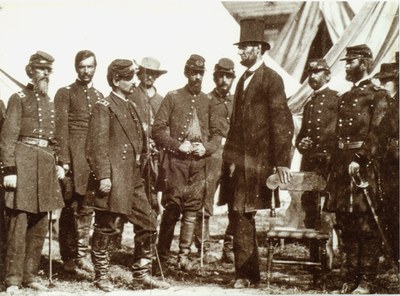
Purchase Tickets
Civil War from Fort Sumter to Emancipation

In recognition of the sesquicentennial of the Civil War, The Civil War from Fort Sumter to the Emancipation Proclamation is on display on the fourth floor of the History Center in the Rosemary McKee Lanham Gallery through April 13, 2013. This first of a two-part exhibit includes items depicting the beginning of the war through the issuance of the Emancipation Proclamation.
America’s most tragic conflict erupted at Fort Sumter, S.C., on April 12, 1861. The Confederacy reached the height of its power after a series of battlefield victories in 1861 and 1862. The Battle of Antietam on Sept. 17, 1862, was the bloodiest single-day battle in American history, with nearly 10 times the American casualties of D-Day.It was a turning point in the war as the South’s bold invasion of the North and efforts to force President Lincoln to consider peace failed. Though not the decisive Union victory he had hoped for, Antietam was enough of a win for Lincoln to issue his Emancipation Proclamation, declaring that all slaves residing in territory still in rebellion against the federal government on Jan. 1, 1863, would be legally free.
The proclamation did not actually free anyone since it did not apply to border states or to slaves in Southern areas under Union control. However, it did show that the war was also being fought to end slavery, and though it did not specifically end it – this was achieved by the 13th Amendment to the Constitution in December 1865 – the proclamation did make slavery’s demise likely as part of an eventual Union victory.
The exhibit includes photographs of Abraham Lincoln, soldiers and battlefields; lithographs of Lincoln and his cabinet members; maps; sheet music; and engravings of images from the White House, the Emancipation Proclamation and more.








